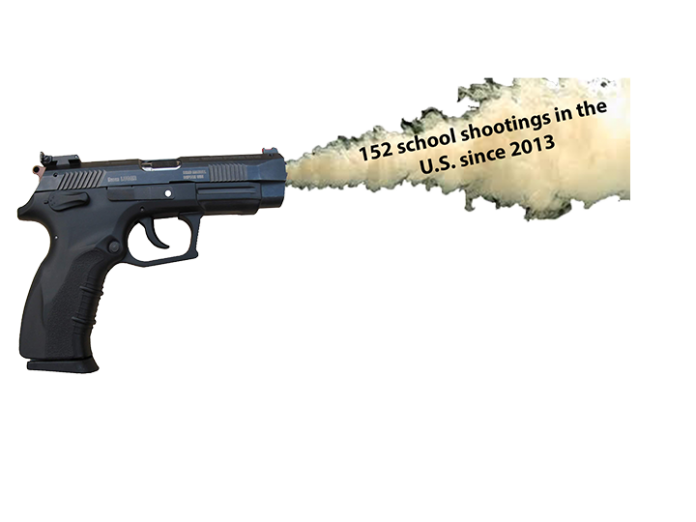By Eric Vining, Contributor
With an increasing number of shootings at colleges and universities across the United States, university administrators and officials across the country are working harder than ever to make sure their students, faculty and staff remain safe on college campuses. Some of the most notable events have occured in recent weeks at Umpqya Community College in Roseburg, Ore., and Texas Southern University in Houston.
Baylor is no exception, and administrative officials constantly improve plans already in place to take care of such emergency situations.
“We’re constantly evaluating, assessing, re-assessing and implementing counter-shooter strategies,” said Mark Childers, associate vice president for campus safety and security. “We work very closely with our partners here in Waco, the Waco Police Department, McLennan County Sheriff’s Office … all working collaboratively. We meet and plan and almost train together.”
As a department, Baylor PD provides more training to its officers than many officers at similar universities. Baylor’s Department of Public Safety provides drill, tabletop, functional and full-scale exercises to prepare its staff for emergency situations on campus, according to Baylor’s website.
“Its really a partnership between the community and the Baylor Department of Public Safety to keep the campus safe,” Baylor Police chief Brad Wigtil said.
Wigtil also discussed the in-depth training Baylor PD’s 34 commissioned peace officers go through as members of Baylor’s Department of Public Safety.
“We’re definitely out in front as far as tactical training,” Wigtil
said. “We basically do real-life exercising where we use simulation that’s as close to real life as you can do.”
For security reasons, Wigtil could not give details about specific counter-shooter strategies. However, the department officials could go into some detail about the actual training their officers receive.
“There’s some tactical movement that has to happen when we respond [to active shooter situations], and we train on that every month,” Wigtil said. “I’m not aware of any departments that do that every month.”
Childers said the DPS also puts its officers through a series of tactical firearms trainings so that they can sharpen their skills further, which can help officers better respond to active shooter situations if they occur. Officers perform these exercises annually, according to Childers.
When an emergency situation occurs on Baylor’s campus, the university’s communication officers utilize a wide variety of tools to keep the community up to date.
“We have a multitude of communications vehicles,” said Lori Fogleman, assistant vice president for media communications. “We use internal and external loudspeakers, as well as text and email…it’s important to have redundancy in any kind of communication.”
In an emergency, this plan ensures that all students are informed of the evolving situation.
Baylor officials also discussed training opportunities for university faculty, staff and even student organizations that want to be better prepared for emergency situations.
“[Crime prevention specialist] Kandy Knowles for several years now has done active shooter training,” Wigtil said. “We’ve targeted some very important groups, like Campus Living & Learning staff…because in our residence halls it’s very, very important for us to have mechanisms in place to keep our residents safe.”
Knowles, who is a commissioned peace officer at Baylor PD, has also provided training seminars for maintenance and ground keeping staff as well as on-campus Aramark employees as well as emergency building coordinators.
“Her training…is pretty extensive,” said Leigh Ann Moffett, director of emergency management at Baylor. “If there’s a group who’s interested in getting that training, there’s a simple request online.”
According to Baylor’s law enforcement officials, the most important thing students and faculty can do to prevent emergency situations is to be aware of one’s surroundings at all times.
“I think we all are guilty at times of being so focused on whatever’s weighing on us or looking at our devices,” Moffett said. “We’re just not aware of the environment we’re in and we’re not taking into account what that means for our individual safety. “Faculty, staff, students…all have an individual responsibility to be aware of what’s going on and to have a plan.”
Wigtil also encouraged students to report suspicious behavior when they see it.
“Research shows that active shooters were engaged in some type of behavior that was disconcerting to people around them,” Wigtil said. “It’s critical that everybody in the community…have the moral courage…to go ahead and call and get the person who is in crisis the help they need.”
For additional information on how to stay safe on campus, or to report suspicious activity, members of the Baylor community are encouraged to visit www.baylor.edu/emergency or contact Baylor PD at (254) 710-2222.






